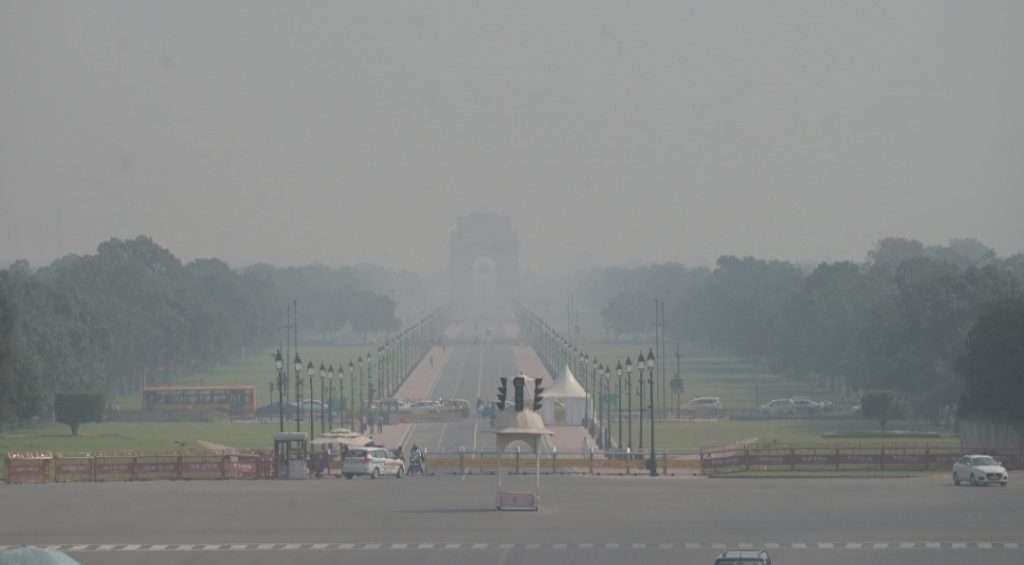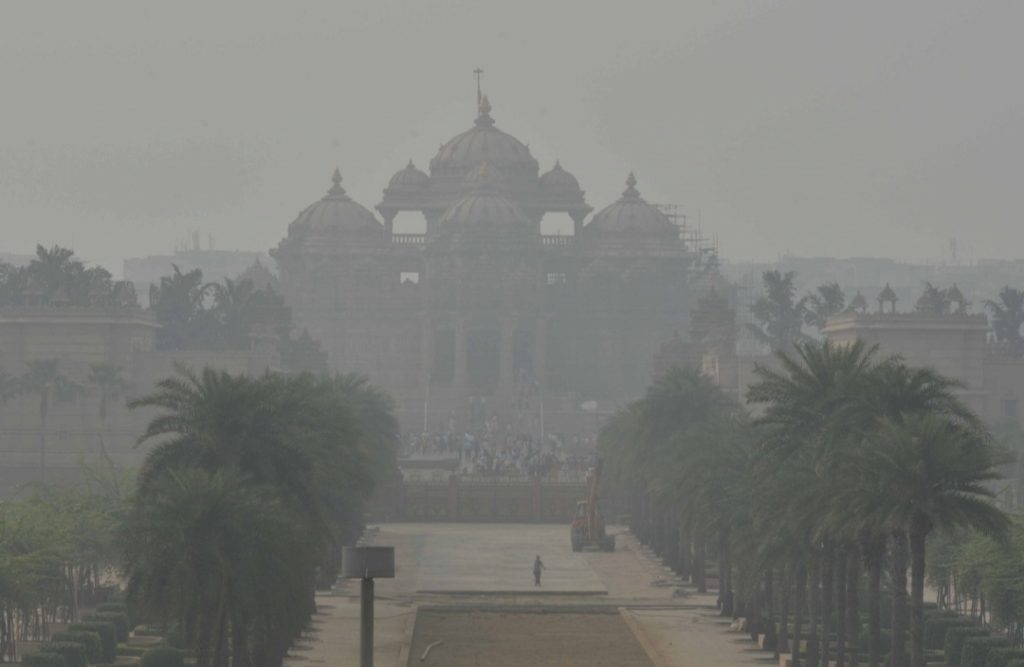
Poor air quality continued to affect the national capital even as doctors advised caution to the vulnerable section of society.
According to the System of Air Quality and Weather Forecasting And Research (SAFAR), the Air Quality Index (AQI) in the city was recorded at 360 under “very poor category’’.
The Central Pollution Control Board (CPCB) reported higher readings in certain areas. The air quality index reached 391 at Kartavya Path.
Locals reported various health issues due to ongoing pollution. “ Air quality is very poor as you can see the smog is getting dense everyday. Government is using water cannons and drones along with other measures to maintain the AQI but it is not working and now affecting citizens,”Amol Vishwakarma, a Delhi resident said.
Doctors confirmed a link between the worsening air quality and an increase in the in flow of the patients with respiratory problems.

“Air pollution is a issue which is troubling all of us for a long time. And now it has reached dangerous levels. As an ENT surgeon, we are seeing increased number of young patients who are coming with breathing respiratory difficulty, irritation in the throat, nasal discharge and almost going on to asthma with breathing difficulty. This is in, even in young patients,” Dr. Ajay Swaroop, ENT Surgeon, Sir Ganga Ram Hospital, told Tehelka.
“You should try to avoid outdoor activities as much as possible. Even when somebody is moving out, they should use a mask. A face mask is a must. In case of any respiratory ailment or such problem, it should not be taken lightly. They should see their local, physician or ENT surgeon or whoever is close by, competent person so that he can be assessed how much is the problem and given some remedial measures, ” he cautioned.
The centre for Science and Environment (CSE) has shown in its latest analysis that vehicular pollution has emerged as the top polluter in the capital city of Delhi. It is more than stubble burning, road dust or bursting of fire crackers.
Speaking to Tehelka, Kalyani Tembhe, Deputy Programme Manager, Centre for Science and Environment said, “As per our recent study, Delhi’s own pollution is very high and within that around 50 per cent pollution is getting contributed through vehicular emission.”
“The rapid motorisation, congestion and the lack of use of public transport is contributing …the contribution is too high from these sources and not many actions have been taken so far to motorisation in the city. The efficiency of public transport needs to be improved. To see a good change in air pollution level, these actions needs to be taken at ground level and proper studies need to be done to estimate where the pollution is coming from and all the sources need to have mitigation actions implemented,” she added.
A recent analysis by Centre for Research on Energy and Clean Air (CREA) stated that Delhi was the most polluted city in India for the months of October with an average PM 2.5 level of 111 micrograms per cubic metre.
It highlighted that all the top 10 polluted cities during this period were located within the NCR.
The list of cities with the highest PM2.5 concentrations includes Delhi, with a reading of 110 micrograms per cubic meter, followed by Ghaziabad at 103, Muzaffarnagar at 98, Hapur at 93, Noida at 90, Meerut at 86, and both Charkhi Dadri and Greater Noida at 86. Gurugram and Bahadurgarh recorded 83 micrograms per cubic meter each.
In October, Delhi’s average PM2.5 concentration was significantly higher, more than 2.5 times the average of 43 micrograms per cubic meter recorded in September. The report also noted that stubble burning was responsible for less than 10 percent of the PM2.5 pollution in Delhi during that month.
Speaking on the residential emissions, Aditya Wadhokar, Founder, Fligen Systems, a startup for air quality monitoring through drones said that residential emissions are a combination of cooking, heating, and lighting emissions which contribute to 15-20 per cent of the total air pollution in Delhi.
Highlighting the several challenges that hinder effective solutions he said, “Enforcement of environmental regulations is often inadequate, with many industries failing to comply with emission standards. While awareness is growing, significant behavioural changes among the public and industries are still lacking.”
Earlier, the central government on November 6, 2024 amended the commission for Air Quality Management (CAQM) rules for the National Capital Region and adjoining areas. The government has increased the penalty on stubble burning to up to INR 30,000.
AQI remained at 377 at 7 am on November 8. The CPCB had recorded Delhi AQI at 382 at 6 pm.













